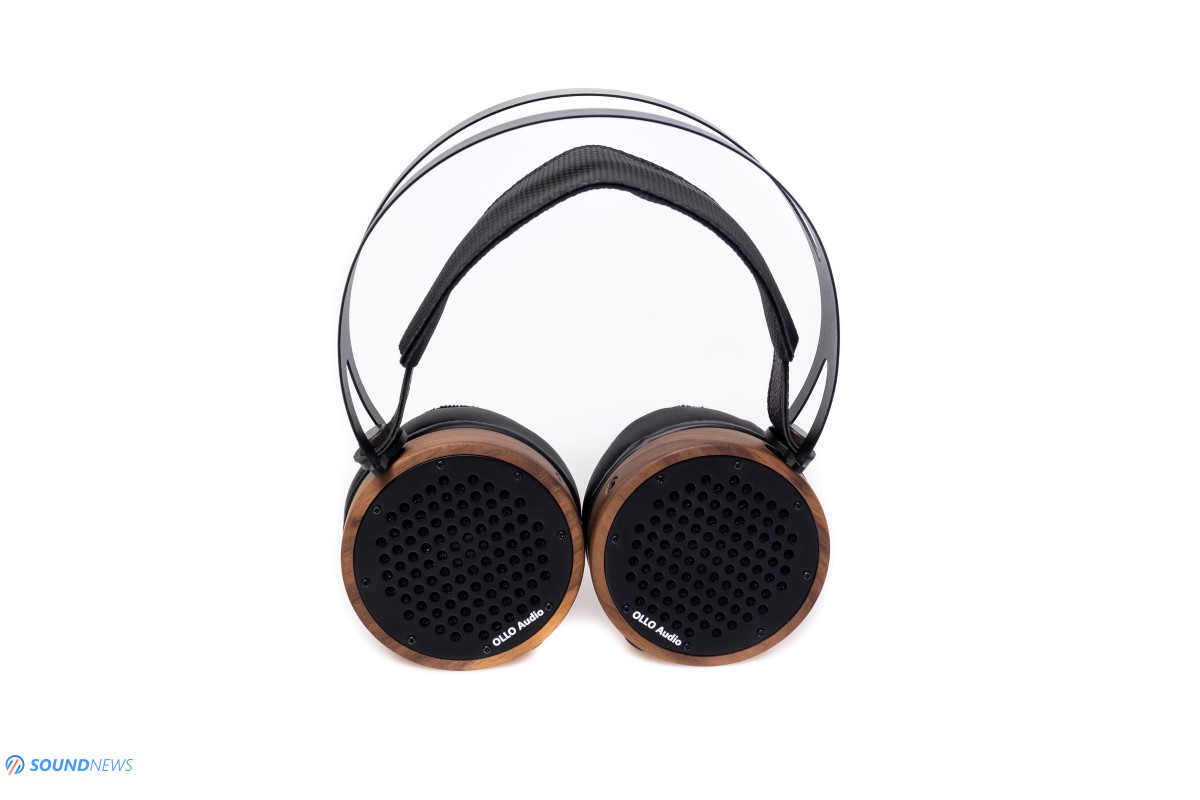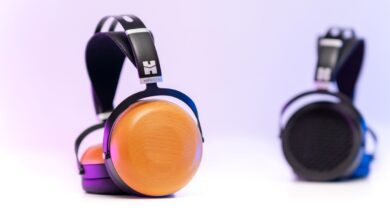OLLO S4X Review – Handmade Reference headphones

My Video Review:
About a year ago I found about handcrafted headphones, from a country located at the crossroads of main European cultural routes – Slovenia. Not one, but two young teams were crafting headphones with their hands, working hard on delivering one of a kind experiences for music lovers and mastering engineers alike. It so happens that I’ve tested multiple iterations of both teams and I’m observing the same pattern, ideas and principles. Once you see a lot of wood and metal in a headphone, that can be serviced at home with simple tools, it’s difficult going back to all-plastic headphones that will require long service times once things are going south.
OLLO S4 that I’ve tested one year ago were an enjoyable listen, with a bit of roll-off at both frequency extremes, I could listen to them all day long. I particularly liked their good driver matching, their reference tuning with a minor tilt towards musicality, their hand-crafted smell and feel and of course that unbeatable price point.
At the time of writing, OLLO was already working hard on their next iteration and the more they worked, the more things Rok and his team wanted to improve and include all that in an upcoming reference model. A lot of time passed before S4X seen the light at the end of the tunnel, this is OLLO’s flagship model that targeted all the cons I’ve mention in my S4 review. They increased rigidity of the frame and lowered its ringing, they widened the headband for a better comfort, they put much better ear-pads and completely solved the limited frequency response at both ends with just a modest price increase. S4X are going for €399 for everyone inside EU, if you are buying outside EU – you can shoot them an email for a VAT free pair. By the way, if you are an S4 or S4R user, OLLO can upgrade them to you to the flagship S4X only for only €99 + Shipping! That is what I call an amazing customer support. Thank you OLLO for not abandoning your fan-base.
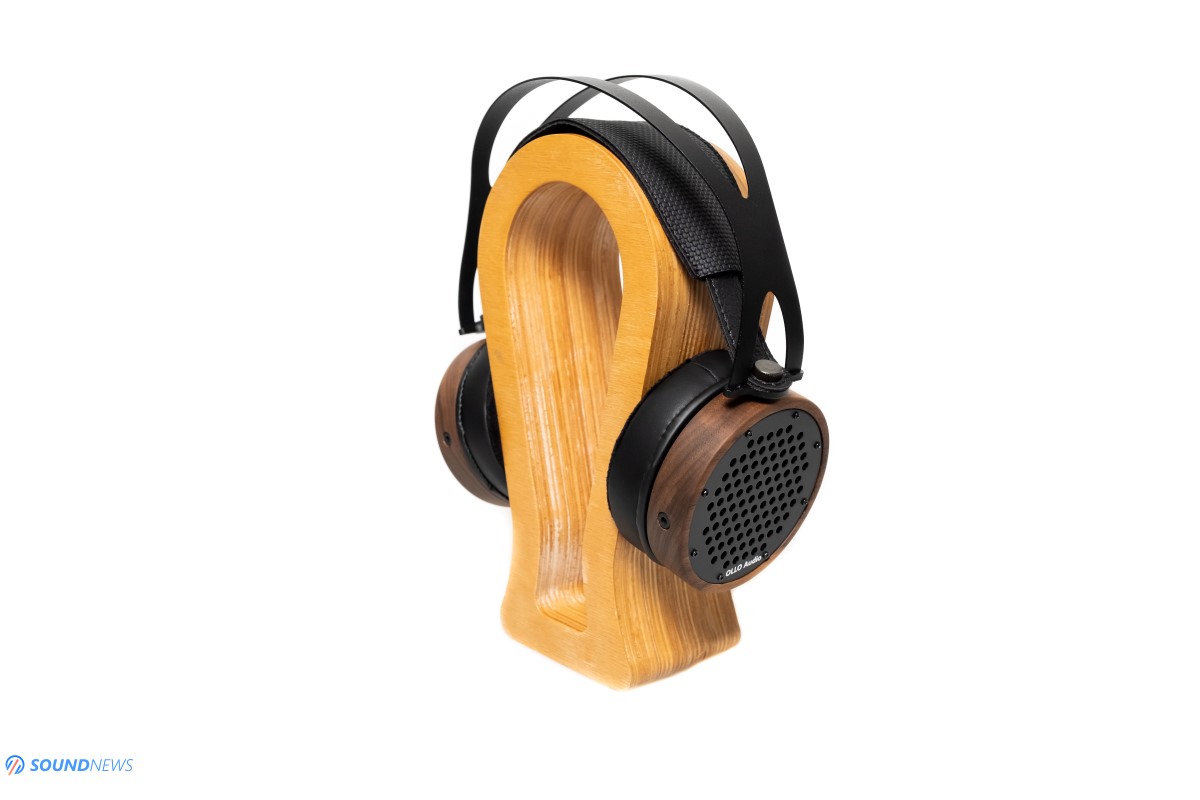
Unboxing Experience
OLLO is again using environmentally friendly materials inside the box. Upon opening it, a fresh aroma of wood and paper hit my nostrils. You will not find any styrofoam or any kind of plastic foam in here. S4X are wrapped in a soft paper blanket, with an eco-leather pouch under them for padding and with some paper work on top as an extra-protection measure. Besides the owner’s manual and safety instructions, OLLO added a certificate of authenticity with a unique serial number, signed by an OLLO representative. I was pleased to find a paper with actual Frequency Response Measurements for this particular serial number. I just wish they offered a zoomed view, especially the SPL (dB) axe feels cramped in there. I will be conducting my own measurements, curious if mine will be close enough to the factory ones. OLLO is of course offering a detachable cable for this model with a screw type headphone adapter at its end, plus an eco-leather pouch for protection.
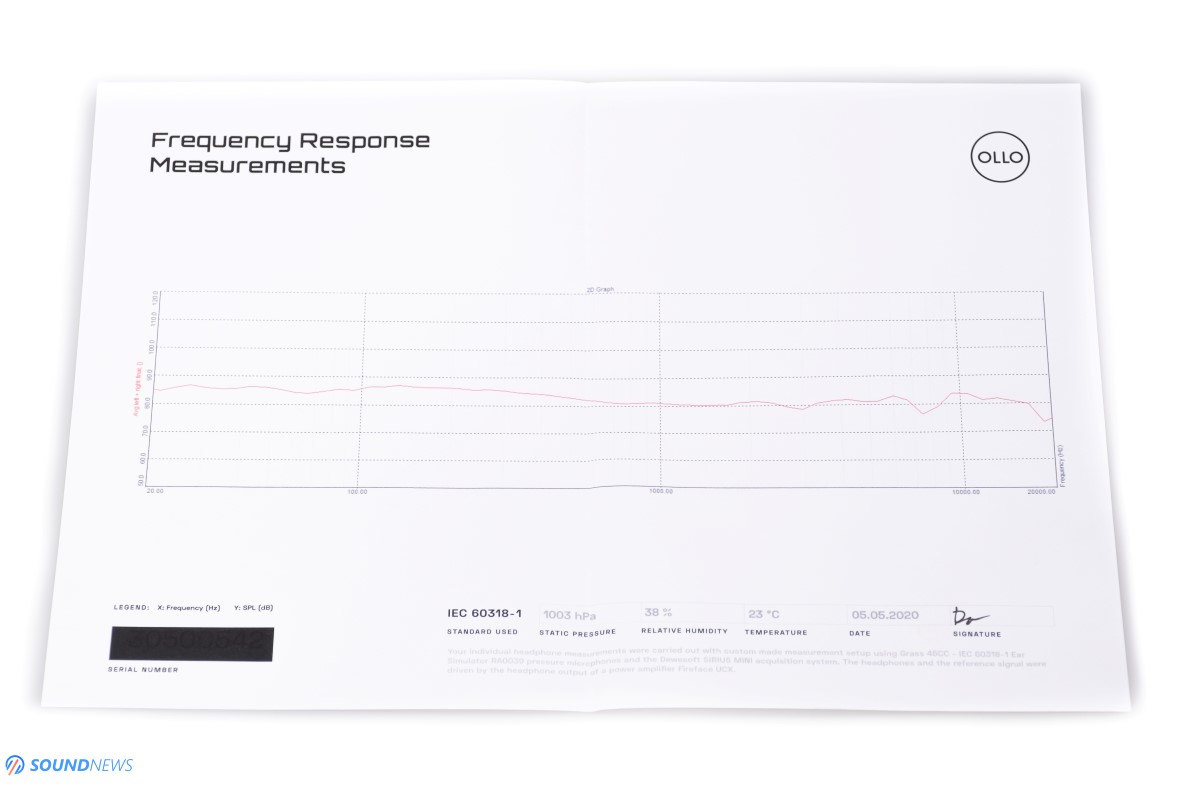
Build Quality & Looks
S4X are screaming OLLO Audio from afar. It still uses only environmentally friendly materials and everything is tightened only by nuts and bolts. The stainless-steel frame seen the biggest improvement, it’s sturdier now, it’s wider and it is sand painted with black paint. The headband is black instead of brown on their previous models and thankfully I’m not spotting white stitching on it. The adjustment mechanism works exactly like on the newest Kennerton and Meze headphones. Just put them on your head and they will automatically adjust to your head size by redistributing its weight around your head.
When I was touching the metal frame on the older S4, it produced a hard ringing sound that was distracting in the long term. It is still here on the newest S4X, but it’s considerably less painful to experience. OLLO partially decoupled the headphone driver from the metallic frame. When they will decouple those drivers completely, the ringing will be gone forever.
The wood cups are made out of walnut wood that I personally really like, I am not seeing a lacquer finish like Audeze headphones are having, but maybe that is for the best. The earpads were completely redesigned this time around. They fit around your head snugly but provide enough padding to rest comfortably against your ears. Instead of velour ear-pads, they developed a hybrid ear-pad for this model with eco-leather around them and just a sheet of velour at the side that touches the cheek. It has memory-foam inside it for a better comfort in long listening sessions. The hybrid earpads were designed most probably to improve the bass performance in the lowest registers.
The head-pressure was quite an issue with their S4 as those clamped harder than a fresh out-of-the-box Sennheiser HD650 or 660S and we all know how bad those are clamping. S4X are way more comfortable this time around, applying just a minor pressure around your ears. In terms of comfort, S4X are scoring top points and it’s going in the right direction.
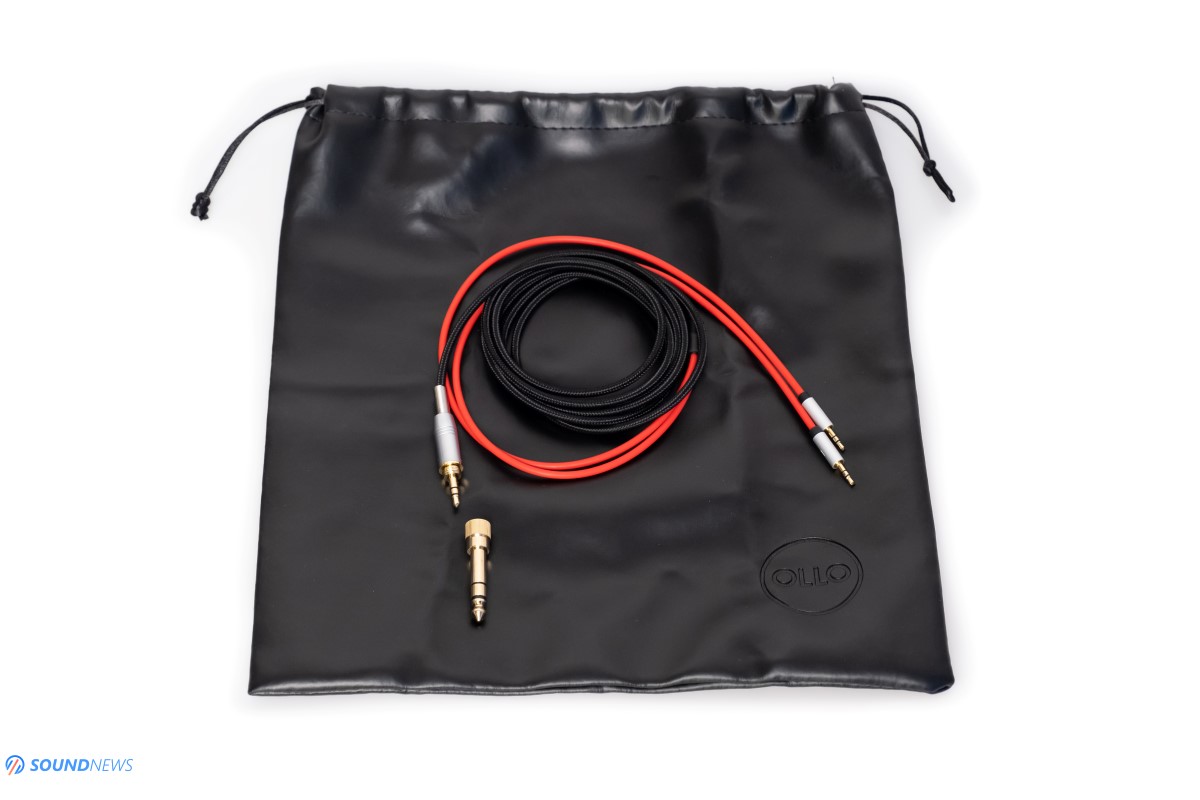
The ear cups are just moderately big, S4X are actually using exactly the same cups with their previous models. With a diameter of 90 mm, these are neither big or small. Inside them a dynamic PET membrane with a thickness of just 25 µm with be playing music for you. It is important to know that these are marketed as over-ear headphones and they indeed wrap my ears around. Some bigger ears might not fit inside though and that might pose a problem for some. OLLO is offering a 30-days trial, so if they don’t work for you, just return them back for a refund.
The weight increased a bit to 350 grams – that is a 40-gram weight increase, but in all seriousness, they feel pretty lightweight and comfortable for me. I mean after using daily 730-gram headphones as Audeze LCD-4 and Erzetich Phobos, S4X are like listening to Antonio Vivaldi after a full day of Sepultura…I don’t mind their weight at all, I’ve used them for half a day straight without feeling pain around my ears or on top of my head.
In terms of build quality, looks and comfort, S4X were seriously improved to its predecessors and if your S4 or S4R are not working that well for you, upgrading to the newest model seems like a no-brainer to me.

Tech inside them
Funny thing is that OLLO Audio uses exactly the same cups and the same drivers of S4, only the inner acoustics were tuned in the S4X. But as measurements will prove later on, a better driver decoupling and better earpads can do a whole lot of difference in terms of sound performance.
We are dealing with the same 50 mm dynamic driver made out of PET. Its thickness is just 25 µm and OLLO advices against pressing them closer to your ears or pressing the cups against a flat surface. 25 µm is still and extremely thin membrane so extra care is needed while handling them, including power delivery to them. Oh! About that, S4X are quite easy to drive, at a high sensitivity of 108 dB per 1Vrms, you can drive them with pretty much everything. Even portable devices like smartphones, tablets and laptops and doing a decent job at driving them to loud levels. Of course, dedicated audio devices and amplification will make them considerably better sounding, but hey… if you don’t have those, no worries as S4X are sounding decent enough connected to my smartphone. As a point of reference, Sennheiser Momentum 2 and Meze 99 Classics are having the same 32 Ohm impedance and pretty much the same sensitivity. If you can drive those with portables, you can drive these too. S4X are using a detachable cable, its quite thin and that bothers me a bit, but considering that there aren’t deep holes near the 2.5mm jacks on the earcups, you can use any third-party custom cable of your choice. The default one has a decent quality, but it’s quite thin and I would definitely invest in a better cable, not for the sound quality but for higher reliability.
As with their past headphones, OLLO went again with a 100% symmetrical design. There aren’t Left or Right markings on the headphones. Only the detachable cable has those markings so any side can be your left or right. I still remember their S4 measuring extremely well in terms of driver matching, so right or left – doesn’t really matter as OLLO are measuring all their drivers for a perfect match and minimal possible tolerance between left and right channels.
OLLO is not specifying if these are closed or open-back headphones, but after taking a look at the padding behind the drivers, it’s neither an open or closed-back design. It’s more of a semi-open design, à la Beyerdynamic DT880 if you ask me.
Okay everyone, let’s hit some eardrums!
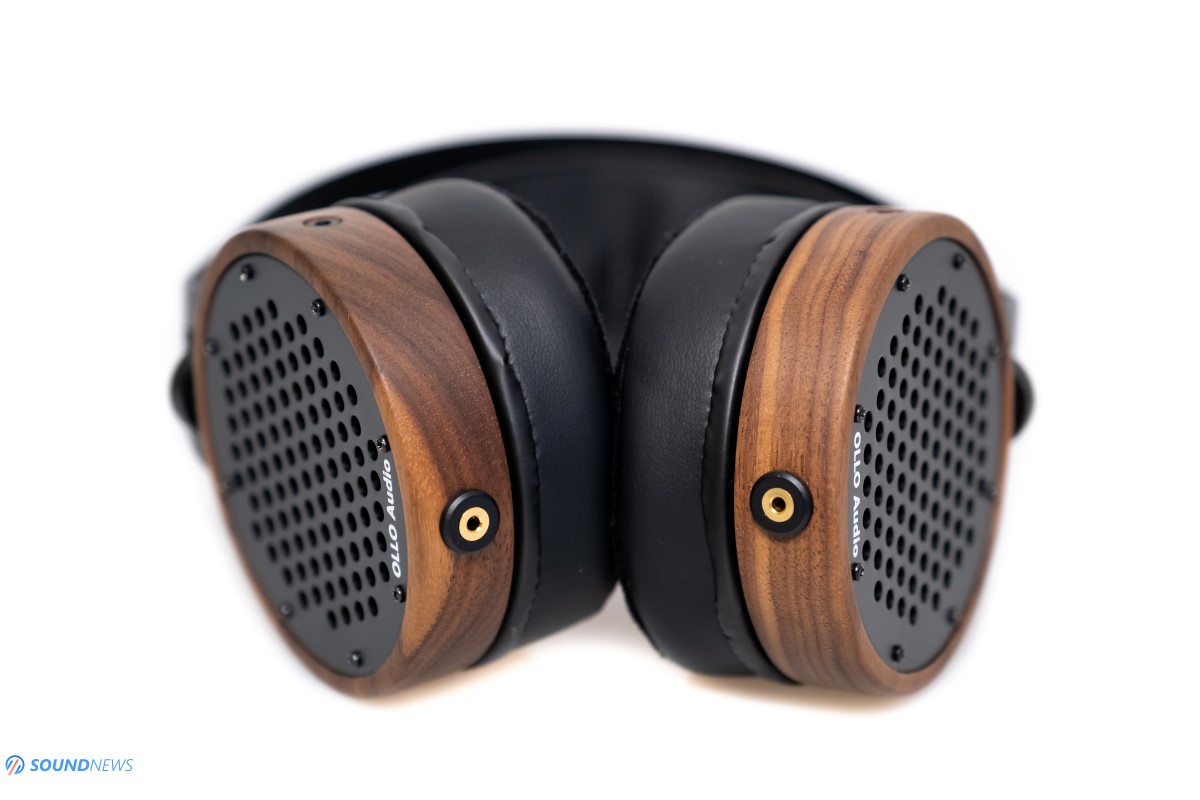
Sound Performance
I. Preliminary impressions
It’s still early in the morning and I’m walking like a zombie searching for something to get that blood pumping into the brain. When coffee doesn’t work, some fiery tunes will be surely doing that for me. This time around Muma Pădurii by Zdob și Zdub (Tidal / Spotify) started boiling me from the inside. In terms of technicalities, it’s far from a perfect record, but hey, I’m pedaling some imaginary double drums, toe-tapping and smiling all along – that is more than enough for a preliminary impression.
I’m finally hearing quite a lot of sub-bass information; midrange went one step forward letting the naturalness rushing in and finally there is more happening in the treble region. I am pretty much blown away by the improvements, as it sounds nothing like the S4 that I know of. I will be comparing both models pretty soon, but my ears never let me down as far as first impressions go. I’m quite surprised by the amount of bass coming from a semi-open dynamic driver. Think about the same Sennheiser HD650 midrange, with a deeper and considerably faster bass, plus a nicer punch in treble, that is pretty much a short description of the S4X sound.
The improvements in terms of frequency response are too obvious. I feel a much better, more defined lower end, plus more details up top. There are still some roll-offs in the most sensitive part of our hearing (between 6 and 8 kHz), but that could be even beneficial when you are mixing or just casually listening for longer periods of time.
I also like that the amp and source pairing is a non-issue anymore, as I don’t need a bass-heavy source or amplification to counter balance the issues of S4. Their predecessor sounded in such a way, that only “V-Shaped” headphone setups worked great with them and linear sounding setups as mine were enhancing their faults even more. S4X seems like a much easier headphone to work with when it comes to good pairings.
Due to a better treble response, I simply hear home happening in that region, more details are coming forward and from a really nice mid-fi experience, S4X are being transformed into some really nice Hi-Fi sounding headphones. I’m enjoying these ones considerably more than Sennheiser HD650 and HD660S and that alone says a lot about their performance as a whole. Funny thing is that I was comparing the sound of the S4 with mid-fi offerings like Meze 99 Classics and Sennheiser Momentum 2, but right now I can easily compare the newest S4X with serious headphones from established manufacturers.
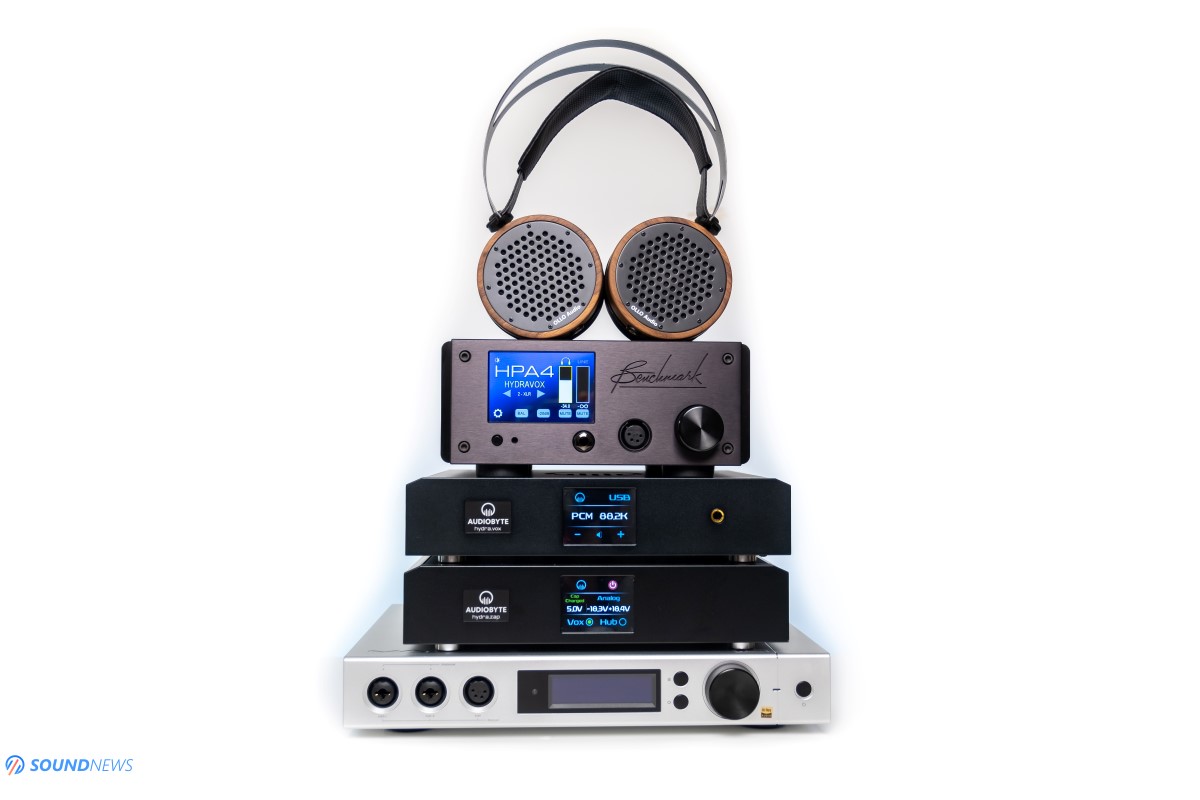
II. Power Requirements
According to the Benchmark HPA4 and to the microphones inside the MiniDSP EARS system, power requirements are about 5 dB lower compared to a Sennheiser HD660S. Doing my math, I presume a sensitivity of about ~101 to 102 dB per 1mW of power and that is easy to drive in my book. Entry-level planar-magnetic headphones like Audeze LCD-1 and Hifiman HE400i are on the same page when it comes to power requirements. If possible, I recommend dedicated electronics as a headphone amplifier to be used with these. Not only because it will get louder, but mostly because dynamics and driver control will be improving tremendously with an amp.
I was maxed out on a Xiaomi Mi 9T Pro and S4X played loud with modern tracks, but when I was using higher dynamic range tracks or older recordings, the volume was insufficient for an enjoyable and punchy experience. With any portable DAP I’ve tried them with, like Shanling M6 or FiiO M15, these worked like magic, I had all the volume I wanted and much, much more.
Moving on to desktop electronics, S4X performed simply the best in these setups. Be it Benchmark HPA4, Sparkos Labs Aries or Flux Lab Acoustics FCN-10, S4X sounded like a serious desktop headphone even from the low gain position. The tiny Topping L30 that I have tested a few days ago, had enough grunt and driving power to move them to painful volume levels even in the mid-gain position.
All in all, if you are serious about the sound of S4X, I recommend dedicated electronics, at least a portable digital-audio-player with a dedicated headphone amp stage, will be enough to squeeze the most out of them.
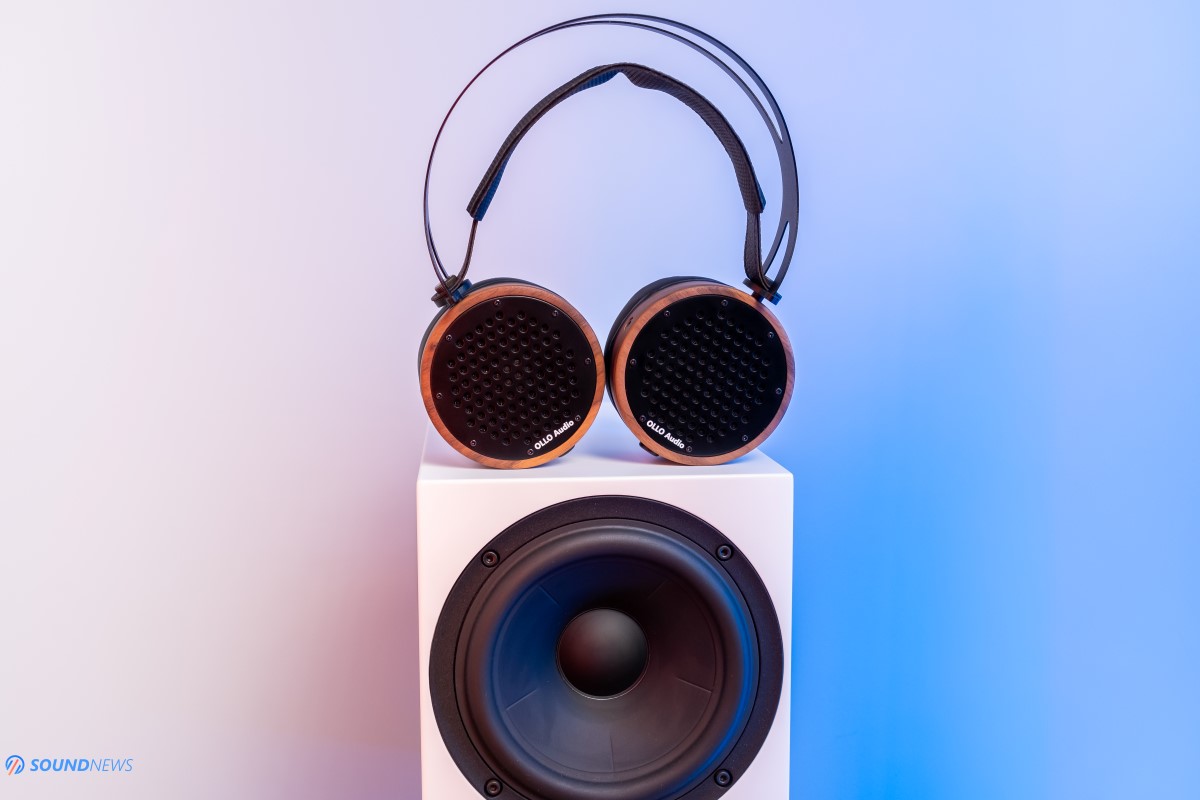
III. Transient Response
The improvements made in the lower-bass performance, made the S4X a much more enjoyable headphone to listen to. While listening to No Man Army by The Prodigy featuring Tom Morello of Rage Against The Machine (Tidal / Spotify), I simply couldn’t hold still my body, but especially my head, a 4 minute and 46 second session of neck massage started and what more I can say, I was smiling and I was grooving all along. From a flatter sub-bass of S4 to a fuller more energic bass performance of S4X, the transient response and especially the slam improved to unrecognizable.
S4 was already a speedy sounding headphone, they needed just a kick-start in term of slam and OLLO completely solved that issue with the newest S4X. I’m not sure why OLLO is marketing these headphones as studio reference monitors, truth is they work extremely well with music listening too. My toe-taps and neck massages are telling me that I am very much enjoying this pair. Transient response is still the most important aspect I search in headphones and if they know how to land a punch, then they surely know how to be gentle too and not the other way around.
The next song on the playlist was Mindfields (Headrock Dub) – The Prodigy (Tidal / Spotify), I almost couldn’t believe the bass quantity coming out of that PET dynamic membrane. I’ve experienced the same thump and impact with the Kennerton Magni, but those are close-back headphones and it made sense to me. In terms of punch, kick or slam, call it as you want, S4X are scoring high points. Sennheiser simply thrown in the white towel, as their HD650/660S can’t offer the same engaging and hard slamming presentation. As a rule of thumb, open-back headphones are faster sounding compared to their closed-back counterparts that will impress more with their slam. S4X has a semi-open design, so it sits somewhere in the middle by offering an amazing speed of open headphones and the kick of the closed-backs.
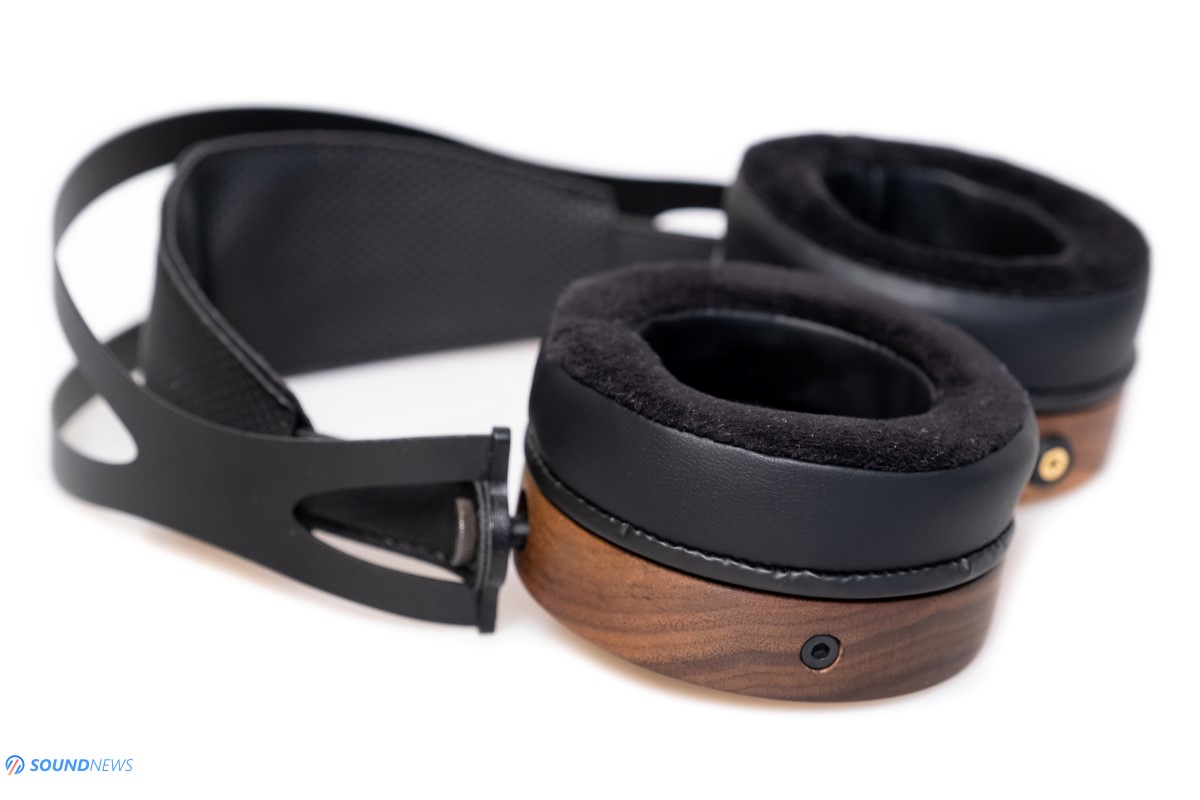
IV. Soundstage & Depth
I won’t go all flowery and poetic and will just tell you right away, that this probably the only area where the older S4 weren’t improved at all. S4X has a decent note separation and pretty nice left to right soundstage, but it is far from open-wide sounding how the rest of the open-back headphones from my stable are sounding. Even the entry-level Hifiman Deva and HE400i are wider and taller sounding, but those have bigger headphone drivers and a fully open-back design. Soundstage size on all axes is more or less on the same level with Sennheiser HD6XX family of headphones. S4X will not wow you with live music, but will also not trigger your claustrophobia, it’s somewhere in the middle. It’s decent enough, but not huge, open wide and spacious by any means. As a small detour, the $400 Audeze LCD-1 sounded basically the same. Not really on the shoulder level or outside my head, more like on the ear level.
Depth is by a hair better; it is still tied to everything that has to do with airiness and stage size so again don’t expect long decays or anything like that. This is where I feel that tracing a single musical note is showing the strength of a particular headphone. A good depth performance always lets me easier focus and trace anything I want in a track. Listening to any older blues or jazz made me do that with my eyes closed. Depth is by a hair better as I can feel the void space between musicians and their exact place in a 3D field. S4X is capable if creating that 3D image in front of you, but it feels smaller in size. OLLO S4X is good in terms of depth and just decent in terms of soundstage size.
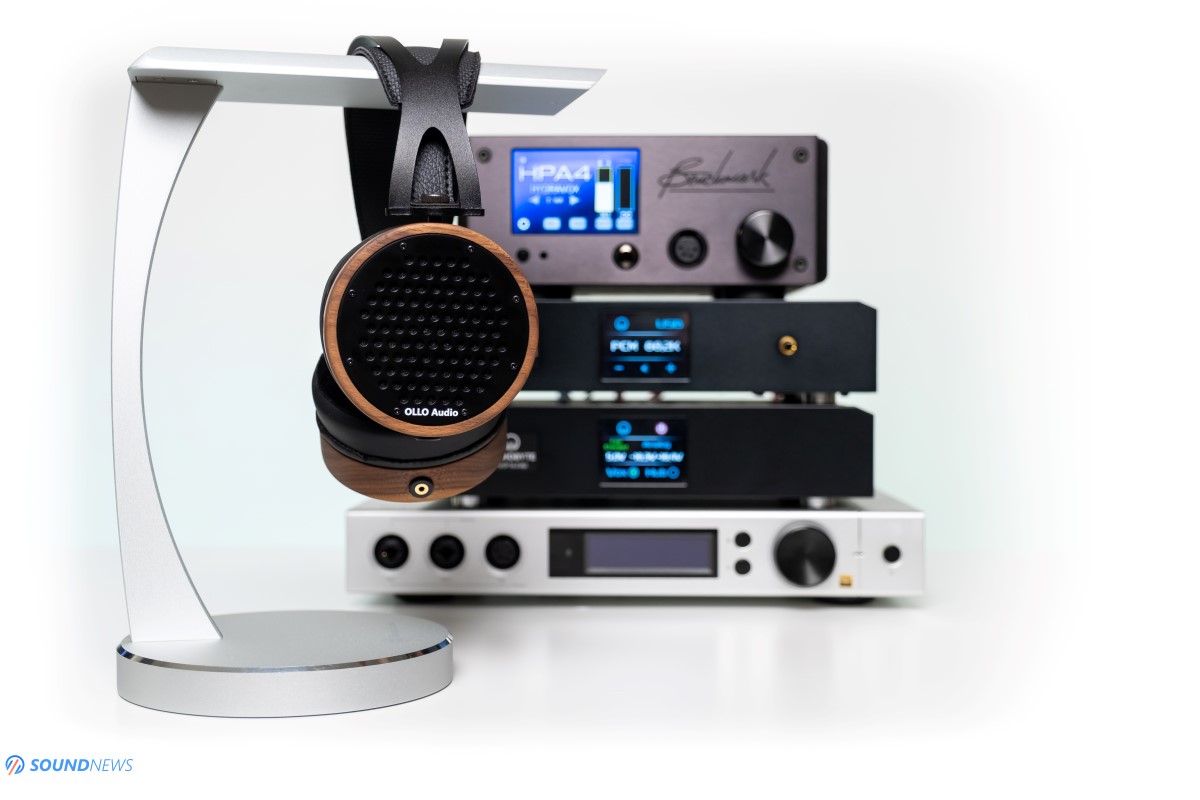
V. Detail Retrieval & Transparency
Colour To The Moon by Allan Tailor (Tidal / Spotify) can sometimes push your headphones to their limits, especially when it comes to resolution and detail. Those are second names of the Stockfisch Records, they know what are they doing, I’m yet to hear a clearer acoustic guitar in any other album. The guitar plucks are vividly clean sounding on S4X and you can feel Allan hands touching those strings. This particular record was mastered to sound great with headphones too, I almost want to rewrite my previous chapter as S4X suddenly became bigger sounding with notes coming from different angles towards me. OLLO put a very capable driver in this one and it will able to show small details and nuances in your music. Whatever The Way from the same album, sounds so clear and cozy, those three guitars are perfectly aligned, the one in the middle is directing the show and the rest are following its master.
I am not spotting muddiness, a veil so to speak, nothing like that in here and this regard, S4X simply obliterates headphones such as Meze 99 Classics or Sennheiser Momentum 2. Honestly, I find them even cleaner sounding that the Sennheiser HD6XX family of headphones and no matter the song, I am not spotting a lack of transparency or resolution as it happens on those Sennheisers. They don’t resolve as much as top-of-the-line planar-magnetics from established manufacturers, but they are coming pretty darn close. Switching back and forth between Kennerton Magni (€690) and OLLO S4X, I’m spotting a huge similarity in terms of resolution, they are both more or less as resolute and clean sounding. SX4 are indeed capable of rendering high amounts of details if you power them with a clean sounding amplifier and source.

VI. Frequency Response
Bass performance was improved to unrecognizable and it’s something that am I am still wondering how they did it. The only explanation I have is that, those hybrid ear-pads filled with memory foam are not leaking bass information as velour earpads did on S4. Bass is strong in this one, it goes deep and it’s controlled from its inception to its decay. S4X doesn’t have wobbly bass performance, but a precise, super tight and controlled type of bass. I’ve heard the lowest octaves even with ordinary music. I am spotting the lowest notes quite a lot in jazz and blues too, not only in my electronica tracks. The most impressive thing about it, is that its dynamic driver could render those 20 Hz notes, without losing energy in that region, it is simply flat from 20 Hz all the way to the upper midrange.
Mid-bass is full of substance, its imposing, with its chin-up and ballsy sounding all the time. In all seriousness, the sub and mid-bass performance is simply immaculate, there is speed, there is impact and a hard slam followed, so I have nothing to complain about.
Midrange performance was improved as well, it has more presence in this region. Male voices are fuller and more authoritative sounding, female voices have a higher pitch too. S4 was very good in here, it is just S4X are better and in this regard, I can now attribute to it words as natural and smooth sounding. Think HD650 midrange, just clearer and more extended in the upper midrange, without a single trace of muddiness or veil. Midrange presence stood out immediately after listening to Hoodoo Man Blues (Yes, this record again, I love it! Tidal / Spotify) and unwillingly I started searching for a drink and for a cigar near me. I don’t know, it’s an effect this record has on me, but it happens only with transducers that can unveil a soul-grabbing midrange presence. Junior Wells plays it so alive and emotional as if he still lives…
There was a huge (but short) dip in the treble performance of S4. S4X solved the biggest part of it, there are still some remains of that Mariana Trench, but those are not that obvious anymore. The upper treble (past 10 kHz) is simply miles better as I am spotting information that wasn’t available on S4. Even more treble information compared to costlier headphones as HD650 or HD660S. I do believe S4X has enough treble presence so impress a treble nut and a decent roll-off to impress a tape or vinyl-head. S4X are far from clinical, bright or harsh sounding. The roll-off happens past top-octave, where anyways only our children can hear a thing or two. The huge dip in the most sensitive part of our hearing was mostly dealt with. Bottom line, S4X is extremely linear starting with sub-bass until upper treble, where things are starting to roll-off a bit for a natural and non-aggressive performance. This is my favorite tuning, as Audeze LCD-4 and Kennerton Wodan are more or less the same in terms of FR, so thumbs-up OLLO!
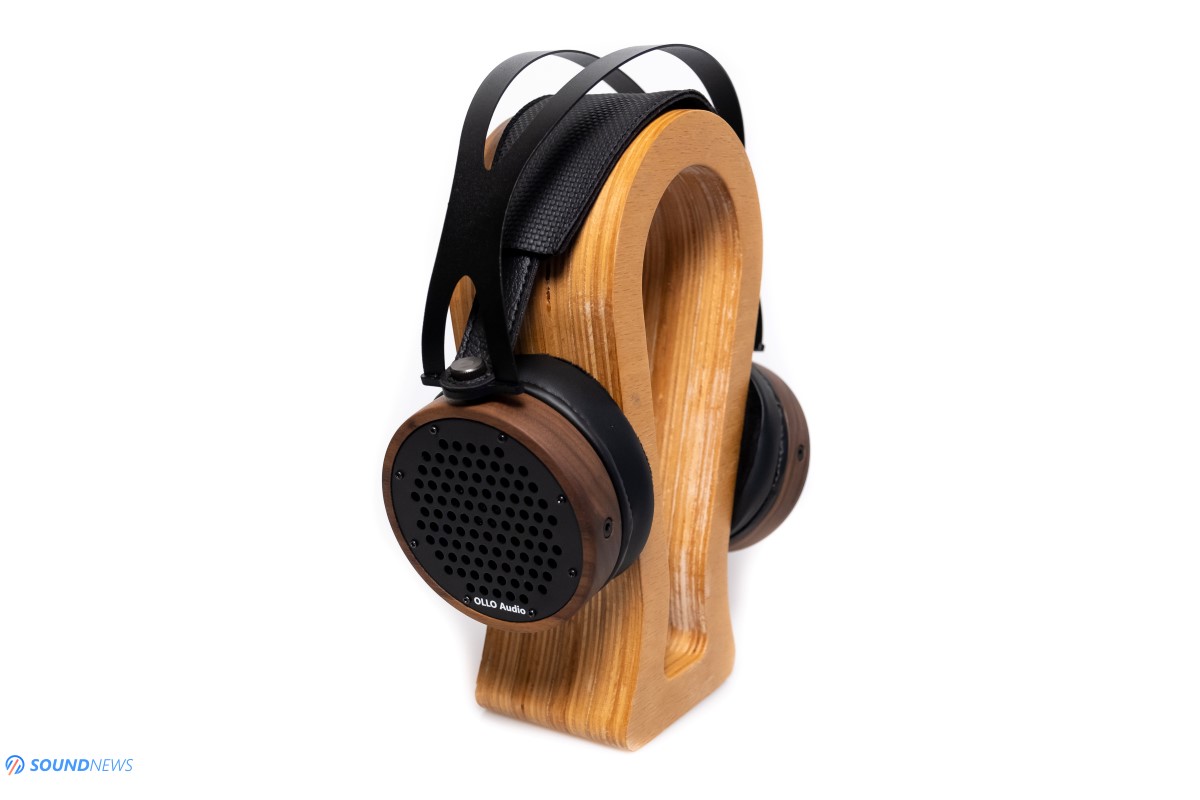
VII. Measurements
After offering my full-blow subjective opinion, it is time to put them under a magnifying glass and see how they perform. It has smaller ear-pads, so I am sure their placement on the measuring rig will drastically alter their frequency response (FR). When it comes to measurements, my best friend is still the Benchmark HPA4 as it is as linear as headphone amplifiers could go and I resumed at using the Matrix Audio Element X as the main DAC for the job. The measurement rig was the MiniDSP EARS calibrated with HPN (Original Headphone Compensation) files. Do note that MiniDSP EARS is not following any IEC standards, meaning that my readings can’t be used as reference measurements or anything like that, I’m doing them only to get a general idea about their sound signature.
The first issue that I encountered is that the ear pads are staying exactly on top of metal screws around the silicon ears of the MiniDSP EARS system, thus breaking a big portion of the seal and recording a non-representative frequency response. I re-measured them more than 20 times after finding the perfect spot on the test jig, no pressure was applied, it was their natural position.
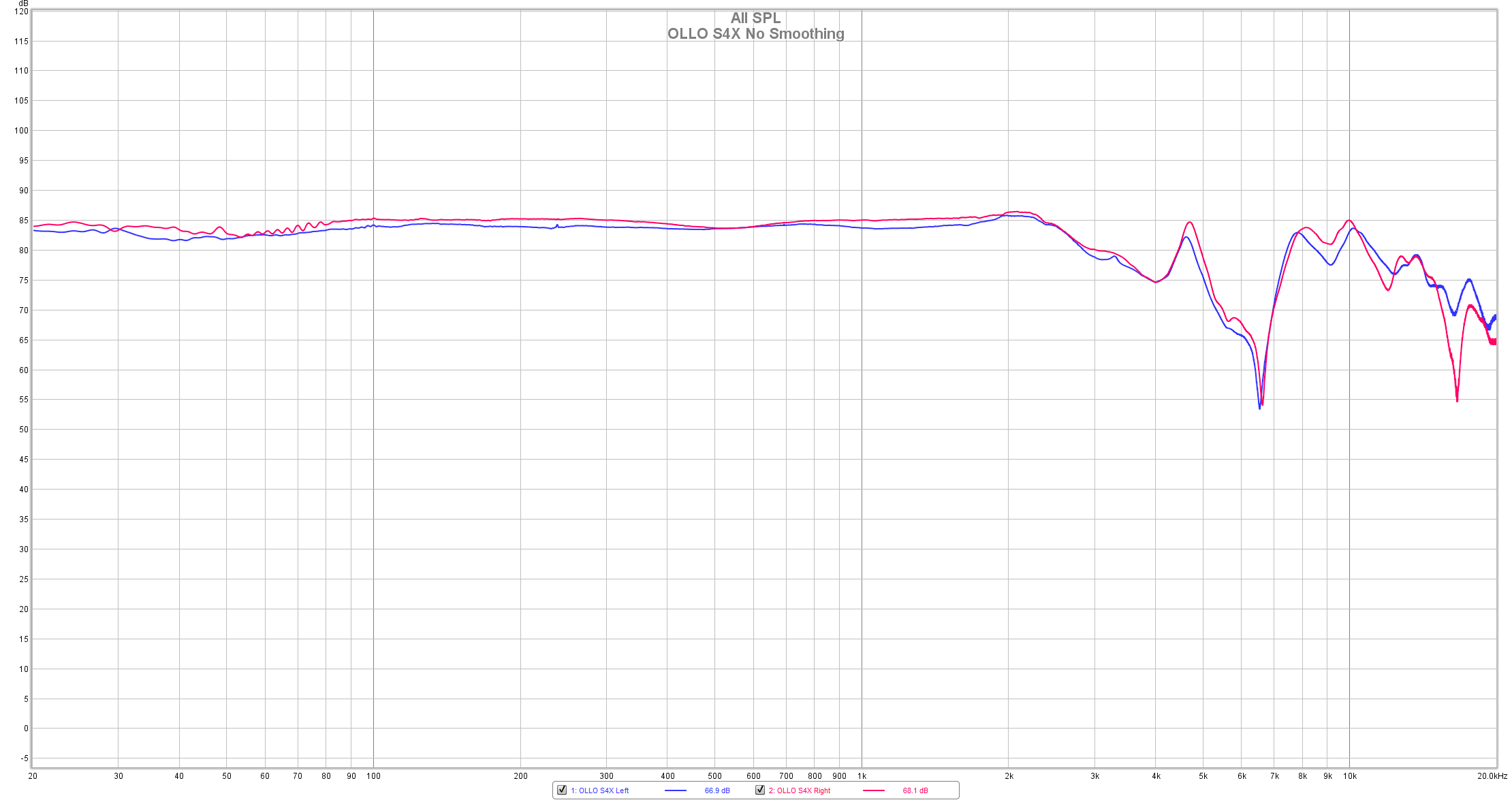
This is their RAW measurement without any smoothing applied. I’m quite impressed by the driver matching, there is only a very small deviation and only at a specific frequency. Some headphones tested around here (costlier ones) had worse driver matching. Somewhere around 18 to 19 kHz there is a bigger driver deviation between both drivers, but good luck hearing that for yourself.
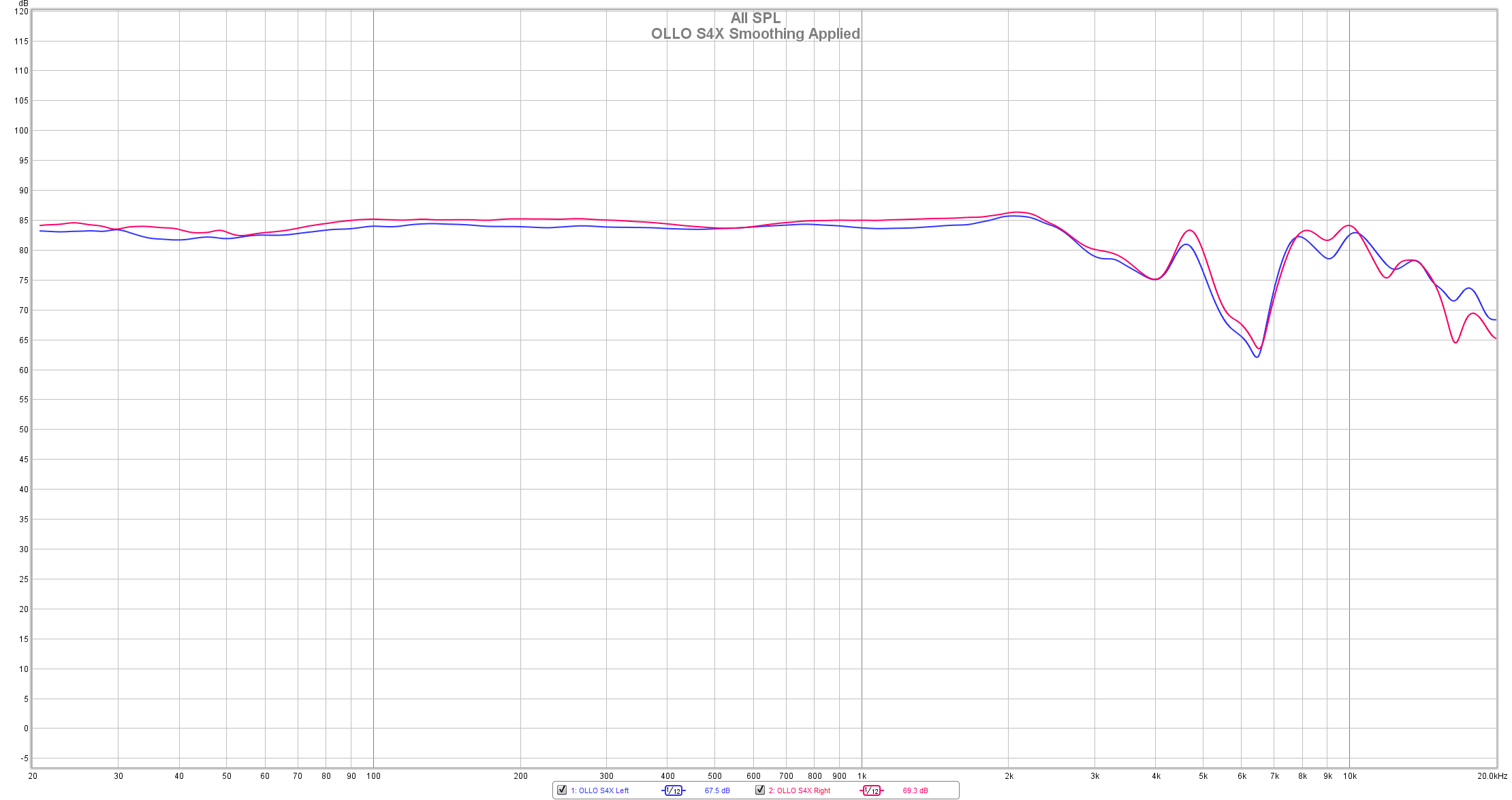
Applying a 1/12 smoothing, I am getting this graph and as you can see, the sub-bass, mid-bass and all that midrange are simply perfect and straight as a line. There is a lot of presence in those regions and only in the treble things start to break-up. Nonetheless the dips in the treble are still nothing compared to those of S4.
As you can see, S4X was tuned towards a natural and enjoyable experience, in detriment of a super-extended FR. I’m Ok with that, as besides analyzing music, often times I just want to relax and be carried away by music.
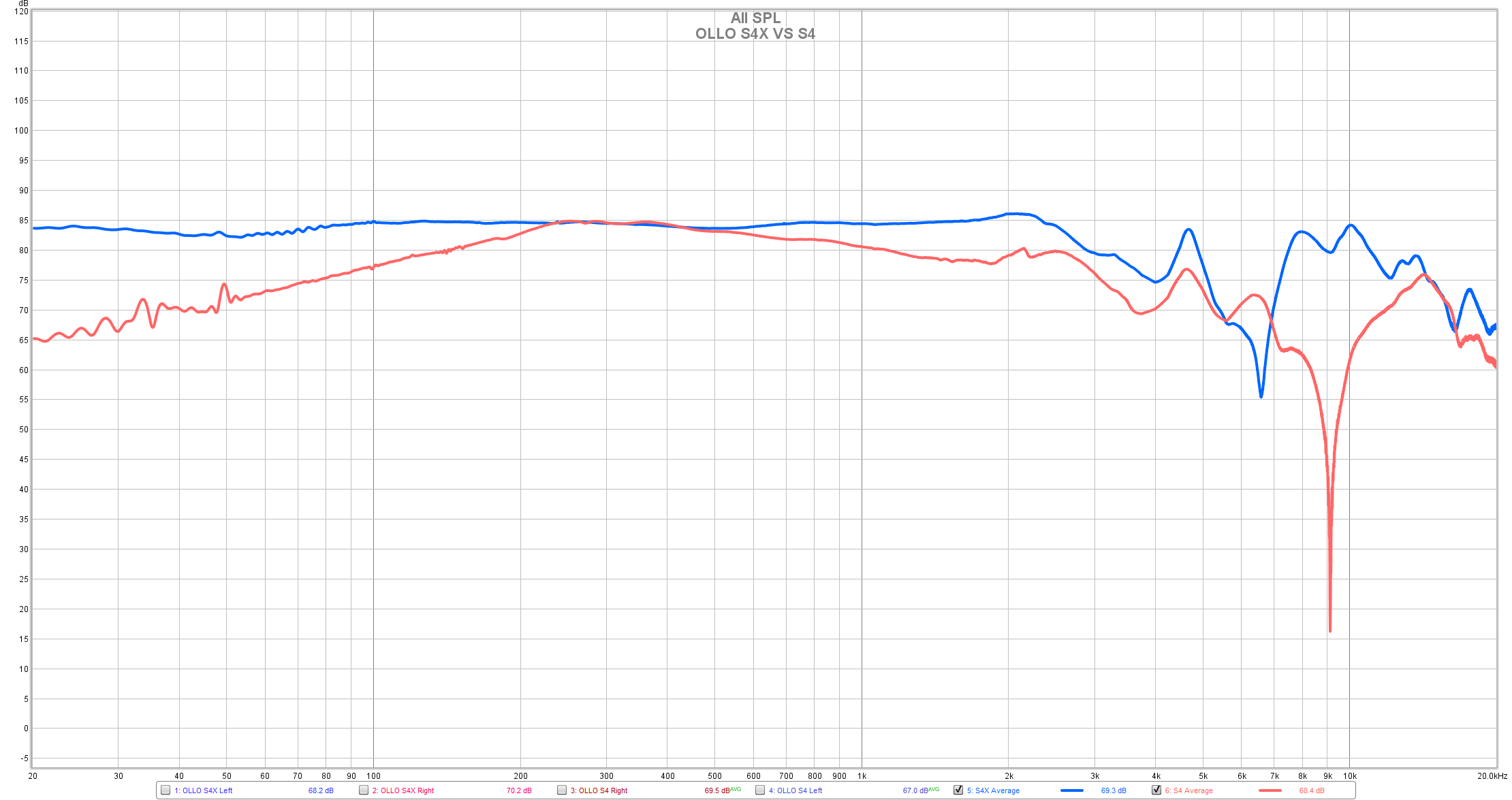
Want a graph versus the former S4? No problem, here it is. Red – S4, Blue – S4X. Amazing improvements in S4X, isn’t it? This is how great engineering looks like. Much better sub-bass performance, more midrange presence and much smaller dips in the treble. It is simply a must-have upgrade to the regular S4 and S4R.
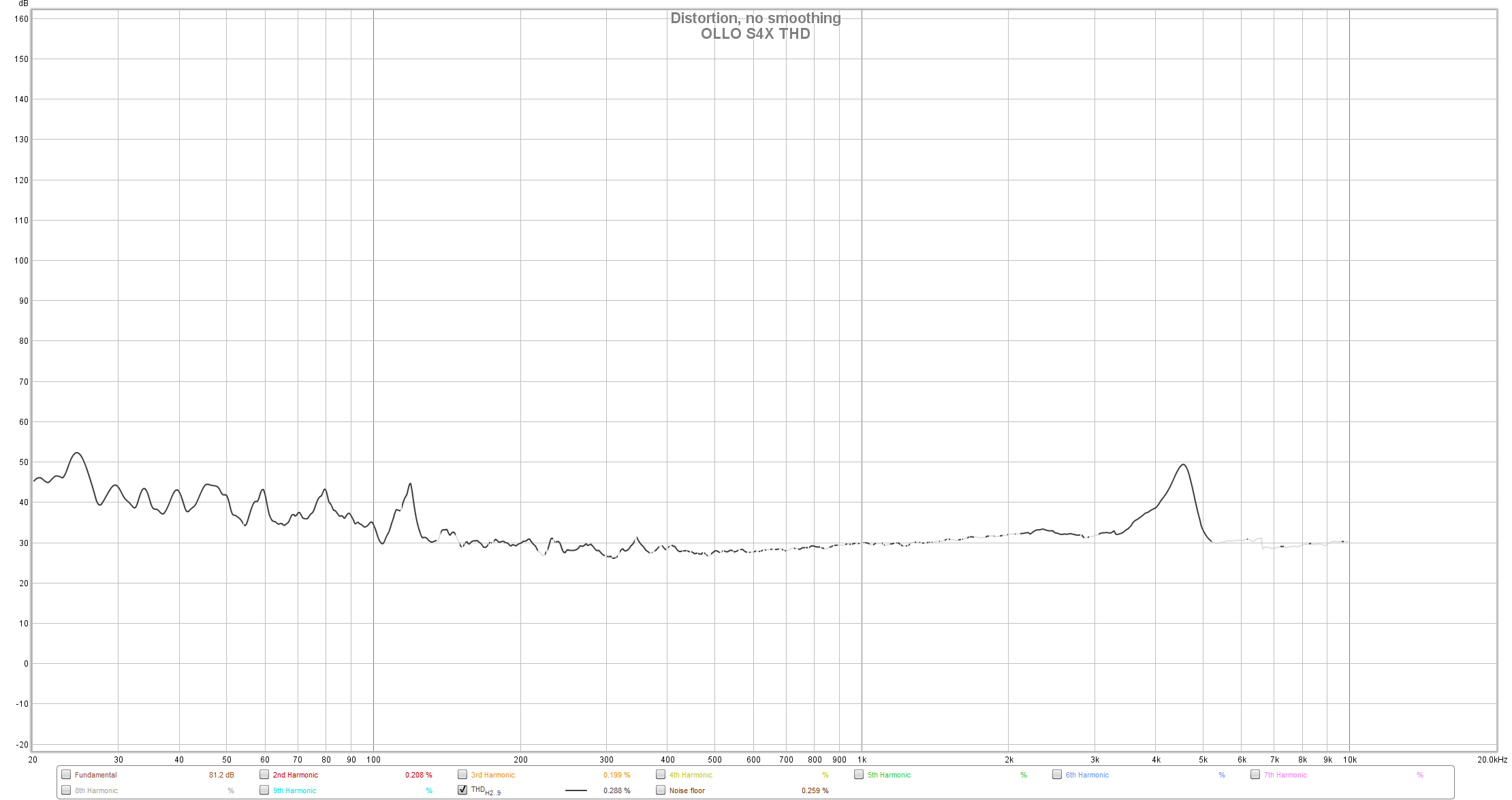
Considering this is a dynamic driver headphone, I think the THD reading is pretty good, it stays at a very respectable 0.288 % of THD, which is great performance by my standards.
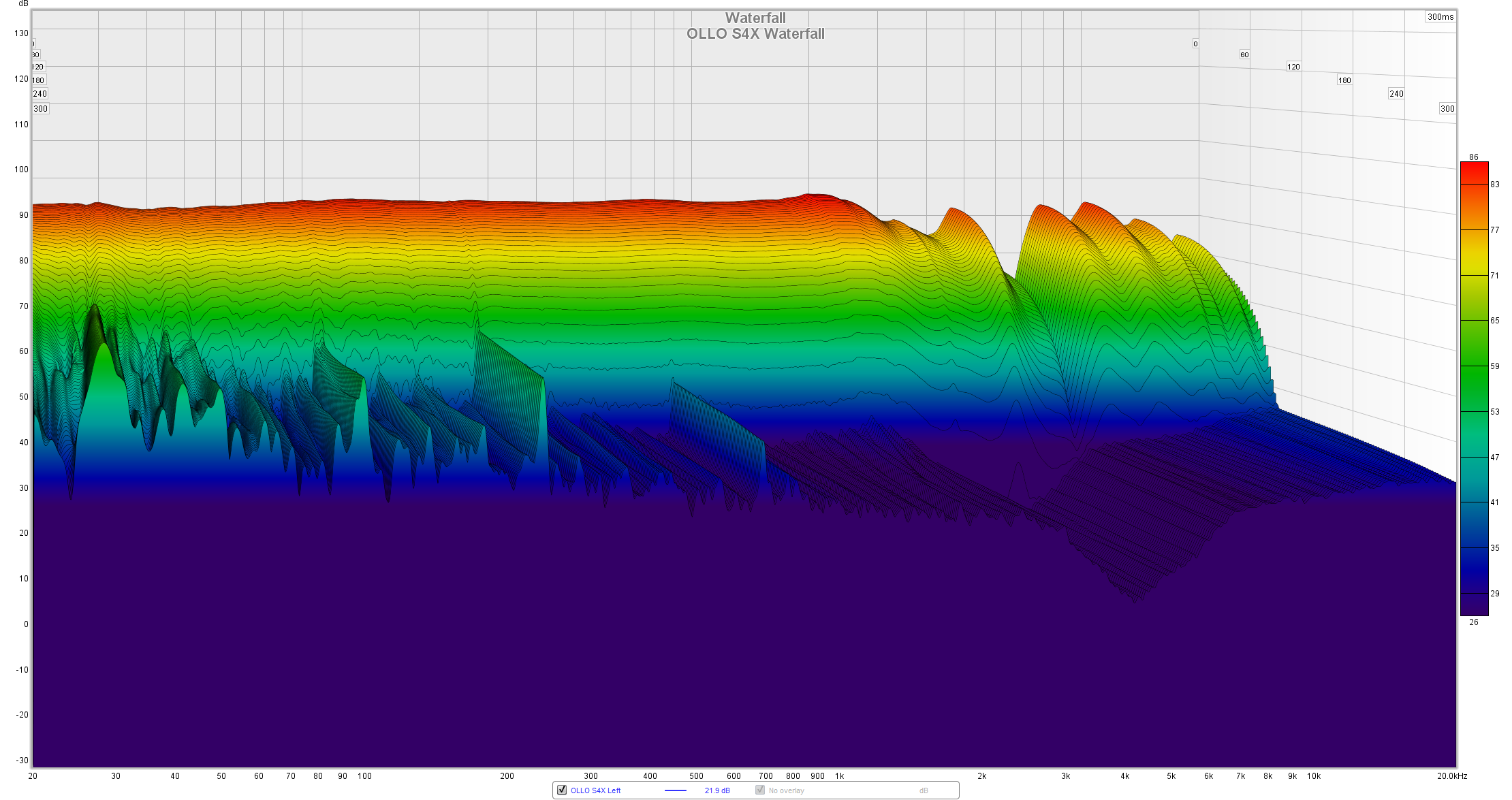
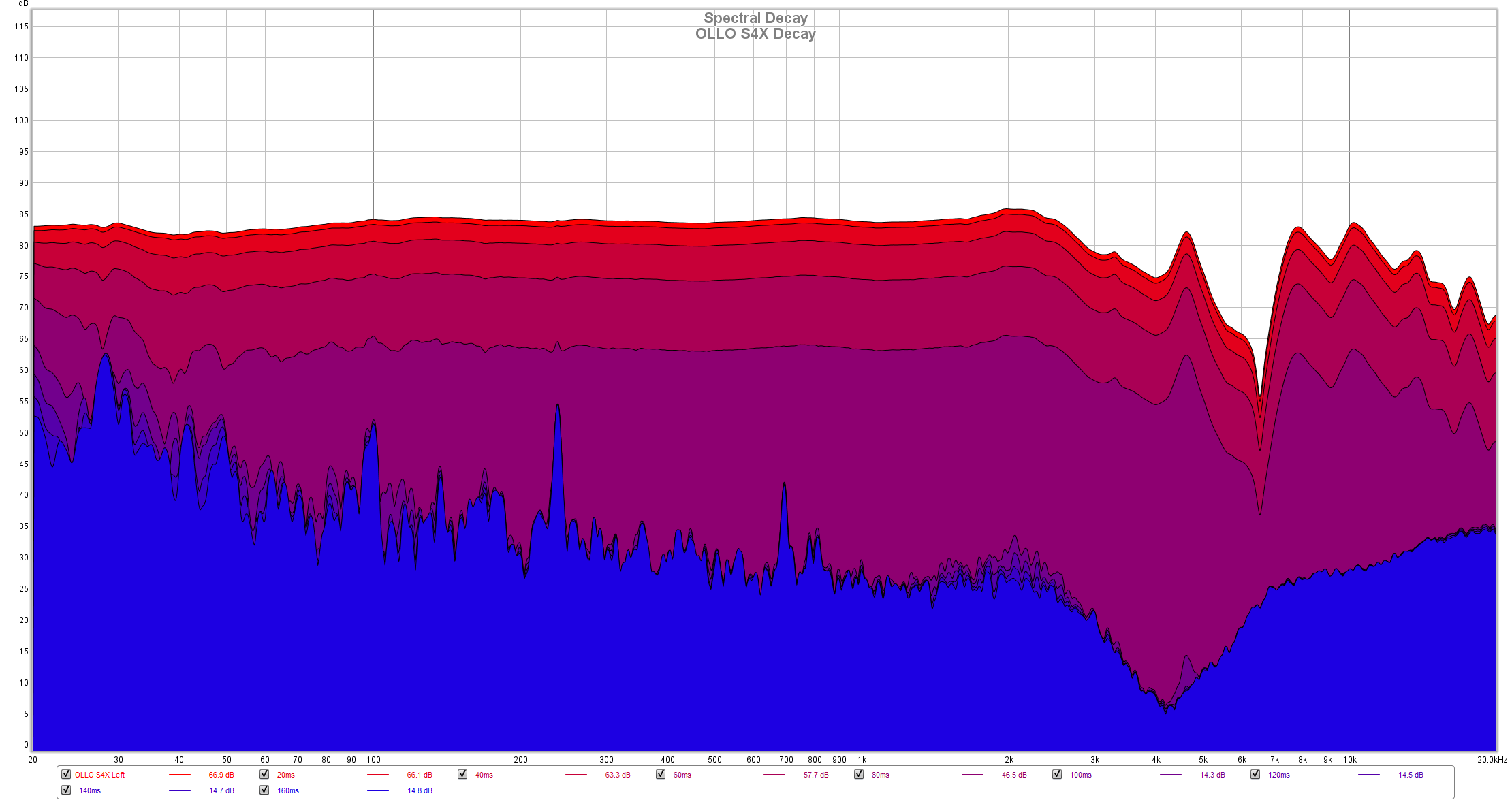
Waterfall and decay readings are looking pretty good too. You can spot the hotter parts in the FR and as you can see bass and midrange are standing out the most. Bass decays slower, but that is natural phenomenon, all dynamic headphones are doing that.
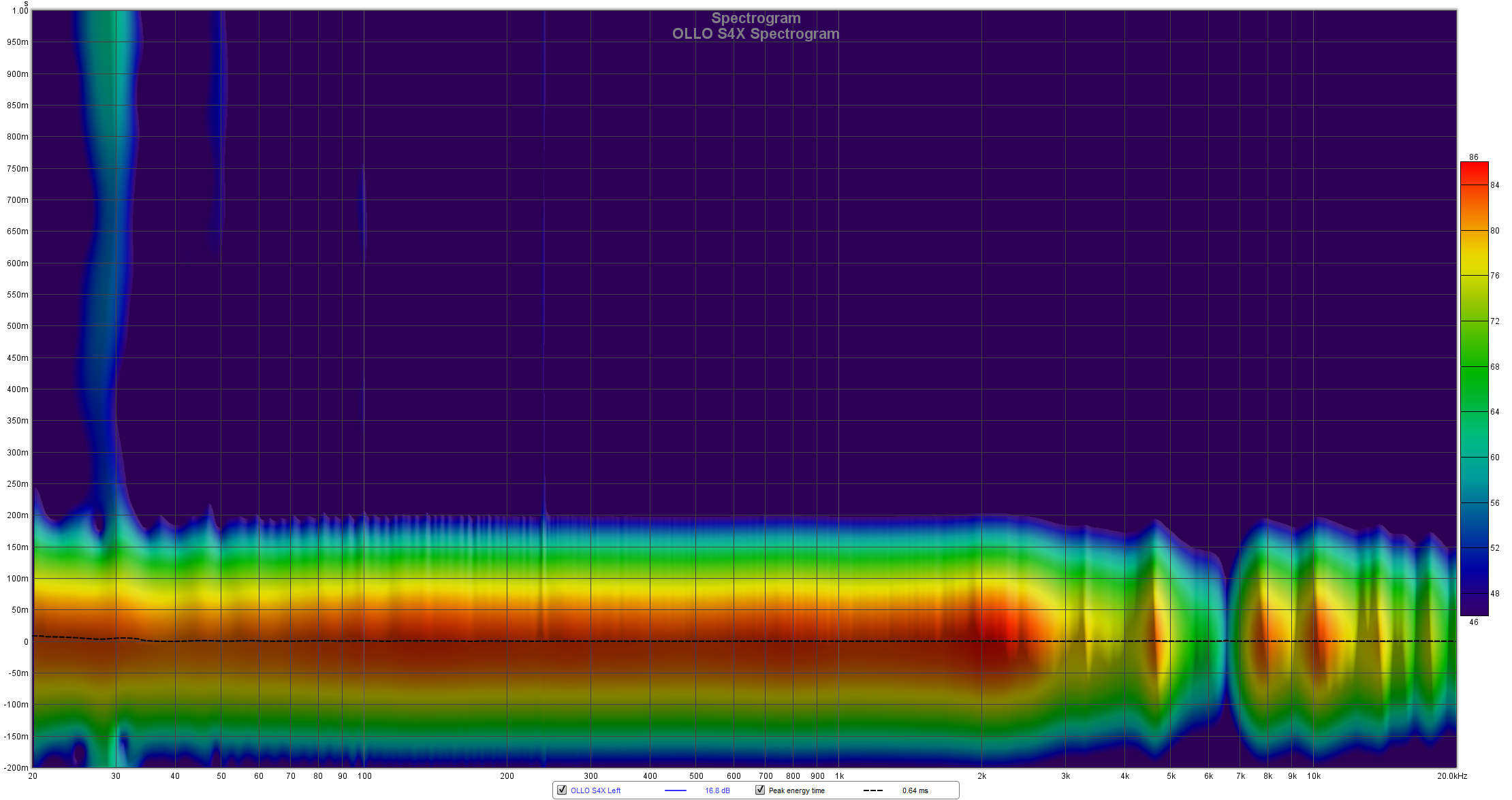
Spectrogram shows a minor ringing of the driver in the bass, but nothing to be worried about, it still rings less than Hifiman Deva.
Overall, I recorded a low THD, a good driver matching, a nice spectral decay that proved the fast sounding nature of S4X. It has un uneven FR in the treble, but it’s considerably better than that of S4. I’m overlooking the roll-off past 18 kHz, but the dip between 6 and 7 kHz should be solved in their next iteration.
VIII. Comparisons

OLLO S4X (€399) VS OLLO S4 (€289)
The most obvious comparison would be with S4 which I reviewed one year ago. I’ve told you already about all the changes and quality of life improvements with the newest model so I would not be repeating myself.
What is kind of fascinating is that both models have absolutely the same drivers and ear-cup designs, the big difference in sound quality comes mostly from decoupling the driver from the its metal frame, from improved earpads and inner acoustic treatments of the cups. Since the dip in the upper treble was dealt with, S4X will offer an additional layer of information in there, everything will be crisper sounding, drums would be better defined, cymbals would sound clearer and more textured. Midrange performance seen a small boost as well, a very welcome change as S4X at this point sounds almost like a flagship planar headphone. Midrange is incredibly natural, close and personal sounding. S4 are by a hair less natural sounding and considerably more rolled-off at both frequency extremes.
As for bass, I can spot it on S4 mostly with electronic music and with S4X I can spot it with any musical genre. If its there, S4X will render it loud and clear. S4 is great from mid-bass to the upper treble and S4X feels considerably more complete top to bottom.
S4X are applying less pressure on my ears compared to S4 and the earpads are slightly deeper too, so S4X are also more comfortable to wear in long listening sessions. The hybrid ear-pads are also sealing a lot more of outside noise. I tried them outside for an hour and they rejected passively a decent amount of noise, a thing that S4 can’t do. All in all, S4 sounds like a good starting point and S4X like a serious grown-up product. Considering it costs only €99 + Shipping to upgrade your S4, it is a highly recommended upgrade path, seriously.

OLLO S4X (€399) VS Sennheiser HD660S (€499)
HD660S are mostly made out of plastics with just a metal mesh and frame. It uses bigger earpads that could accommodate bigger ears, on the flipside I don’t like the bigger pressure HD660s is applying on my ears. S4X feels more comfortable, much easier to service and uses higher grade bio-degradable materials.
As for the sound quality, S4X is a faster, a cleaner sounding headphone, which is also more extended in the frequency response. Both are quite engaging sounding, but when things are getting close and personal, S4X will start throwing harder punches, it’s considerably more engaging sounding with fast modern music. S4X wins in terms of transient response, as HD660S will be awaken from its deep sleep only with desktop electronics. S4X is slightly easier to drive too as it works decently out of my smartphone, HD660S will need a much more powerful device to shine.
Soundstage size is more or less the same with just minor differences, sometimes I feel that HD660S is taller sounding and maybe by a hair deeper. Considering its bigger cup design, this actually makes sense. Both a having a close to medium size soundstage and it is not something both units are proud about.
There are times when HD660S could sound grainy, like there is something in the way of the musical signal and I never felt anything like that with the S4X.
When it comes to frequency response, S4X is a clear winner as they will show more sub and mid-bass information, more or less the same midrange performance and by a hair a better treble performance.
Overall, considering its better transient response, better driver control, wider frequency response, its cleaner and more transparent sound, it was clear that I liked the OLLO S4X considerably more and yet these cost by €100 cheaper. HD660S is a really good sounding headphone, I still like them quite a lot, but at this point we have a new champion in town.
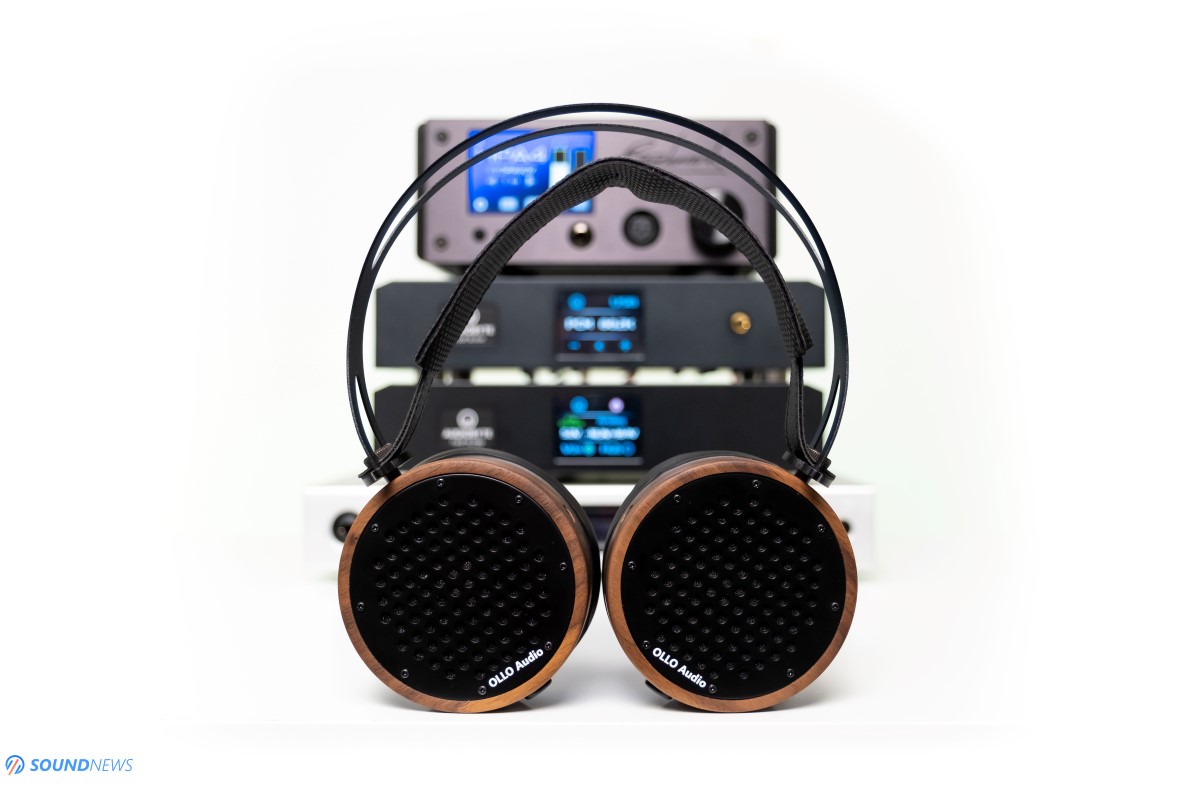
Conclusion
OLLO took a really good sounding headphone and elevated their performance to the next level. Improvements didn’t stop only at sound performance as their comfort and build quality improved as well. The absolute biggest improvement was going from a 1-Year warranty on S4 and S4R, to an impressively long 5-Year warranty of the newest S4X. It shows how much confidence OLLO is having in their newest creation.
Besides the narrower stage size on all axes and a short dip in the treble, S4X are simply flagship material headphones that will be hard to beat at their €399 price point. Their Reference suffix fits them perfectly as these are performing as reference headphones in my book.
You can get them directly from OLLO Audio right here and just in case anything goes bad, you can order spare parts from here (including that S4 to S4X upgrade package).
PROS:
- Great build quality and look
- Lots and lots of improvements over its predecessor
- Much better comfort levels with less side-pressure
- Handcrafted headphones made with love and care
- Good tonal balance, going towards naturalness
- Full-bodied sound, there is warmth and smoothness in this one
- Great detail retrieval, challenging even pricier headphones
- Engaging, speedy and punchy sounding – good dynamics
- Easy to drive thanks to a high sensitivity, works with portable DAPs too
- Reference sound at an affordable price
- Amazing value!
CONS:
- Few dips in the treble
- Soundstage is not the widest or deepest
ASSOCIATED EQUIPMENT:
- DACs: Audiobyte HydraVox + HydraZap, Matrix Audio Element X, Flux Lab Acoustics FCN-10, Burson Conductor 3X Performance
- DAPs: Shanling M6, FiiO M15
- Headphone Amps: Benchmark HPA4, SparkoS Labs Aries, Flux Lab Acoustics FCN-10, LittleDot MKIII SE
- Integrated Amps: KECES E40
- Power Amps: KECES S125, Kinki Studio EX-M7
- IEMs: FiiO FA9, FH7, Meze Rai Penta, Rai Solo & lots of other lower tiered ones
- Portable headphones: Sennheiser Momentum 2, Meze 99 Classics
- Wireless headphones: Sony WF-1000XM3, Sennheiser Momentum 3, Master&Dynamic MW65
- Full-sized headphones: OLLO S4X, S4, Sennheiser HD660S, Audeze LCD-4, Erzetich Phobos, Erzetich Mania, Hifiman Arya, Deva, HE400i, Quad ERA-1, Kennerton Wodan, Magni & Gjallarhorn
- Loudspeakers: Buchardt S400
- Interconnects: QED Reference (x2), Aune AL3
- Speaker cables: Kimber PR8, Audioquest Type4
- Power Cables: Isotek EVO3 Premier (x3)
- Balanced Isolation Power Conditioners: PLiXiR Elite BAC400, KECES BP-600
